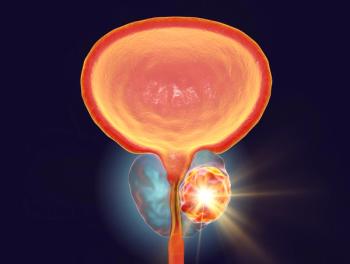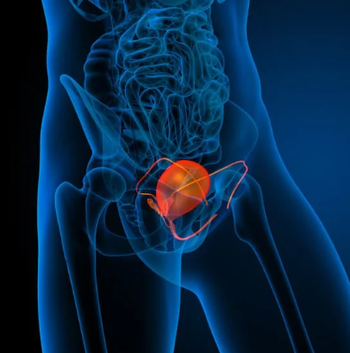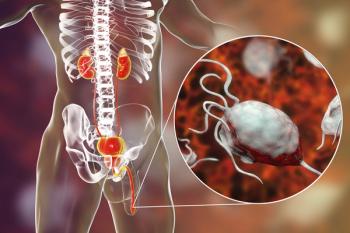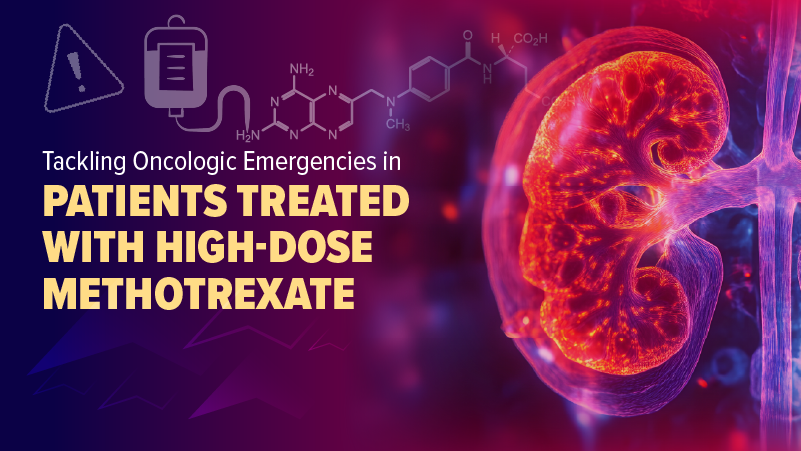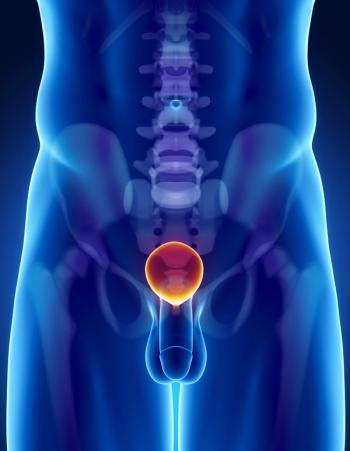
Oncology NEWS International
- Oncology NEWS International Vol 5 No 1
- Volume 5
- Issue 1
Strontium-89 Relieves Bone Pain, May Have Therapeutic Value
MIAMI BEACH--Cancer patients treated with strontium-89 (Metastron) for palliation of their metastatic bone pain may also benefit therapeutically, said Michael J. Katin, MD, a radiation oncologist in Fort Myers, Florida, whose practice includes a significant number of patients with painful bone metastases resulting primarily from prostate cancer.
MIAMI BEACH--Cancer patients treated with strontium-89 (Metastron)for palliation of their metastatic bone pain may also benefittherapeutically, said Michael J. Katin, MD, a radiation oncologistin Fort Myers, Florida, whose practice includes a significantnumber of patients with painful bone metastases resulting primarilyfrom prostate cancer.
"Evidence is mounting to suggest that strontium-89 may retardthe progression of metastatic disease," Dr. Katin said ata symposium on metastatic prostate cancer held in conjunctionwith the American Society for Therapeutic Radiology and Oncology(ASTRO) meeting.
Dr. Katin described the Trans-Canada Study, which tested the efficacyof strontium-89 adjuvant to local field external beam radiotherapyin 126 patients with multiple bone mets secondary to hormone-refractoryprostate cancer.
Patients treated with strontium-89 had a larger decrease in newsites of pain, and significantly more of these patients reportedno newly painful sites, compared with the placebo arm (59% vs34% for the two groups, respectively). Blood levels of serum tumormarkers were also significantly reduced in patients who receivedstrontium-89, compared with placebo-treated patients, during thefirst 4 months after therapy.
Similar results were seen with the UK Metastron Investigators'Group study, which compared strontium-89 treatment with externalbeam therapy in 305 patients with painful prostatic metastaticcancer. Significantly fewer patients who received strontium-89developed new painful sites or needed additional therapy thandid those treated with radiation.
Since 1988, Dr. Katin has used strontium-89 in 229 patients. Overall,76% had metastatic prostate cancer. Of these, pain decreased in83% who were treated with a 50 µCi/kg injection; 13% hadtotal relief of their pain and were able to discontinue theiranalgesics.
Dr. Katin emphasized that while he has not systematically examinedthe question of whether strontium-89 provides therapeutic benefit,he is nonetheless convinced that it has this property.
"We see a decrease in the PSA level in prostate cancer patientswith strontium-89 and a drop in the CA 15-3 in breast cancer patients,"he said. "Certainly, when you observe a decrease in the bloodlevels of those serum tumor markers with use of other drugs, itis implied that you're killing off cancer cells, and it thus seemssafe to conclude that strontium-89 may also have a tumoricidaleffect."
Articles in this issue
almost 30 years ago
HCFA Reevaluations May Affect Chemo Administration Cost Codesalmost 30 years ago
Breast Cancer Info Now on Internetalmost 30 years ago
HDC/ABMT Has Benefits in Multiple Myelomaalmost 30 years ago
Clinical Trial to Study MoAb 17-1A as An Adjuvant to Colon Cancer Therapyalmost 30 years ago
Reporting of Study Comparing Casodex, Eulexin Is Questionedalmost 30 years ago
Limits on Tamoxifen Duration Questionedalmost 30 years ago
ACRO Forecasts Radiologist Surplusalmost 30 years ago
Potency Status Before RT, Not Dose, Determines Post-RT Functionalmost 30 years ago
Dr. Klausner Outlines Goals for NCIalmost 30 years ago
Difficulties in Translating Relative Risks Into Absolute RiskNewsletter
Stay up to date on recent advances in the multidisciplinary approach to cancer.


